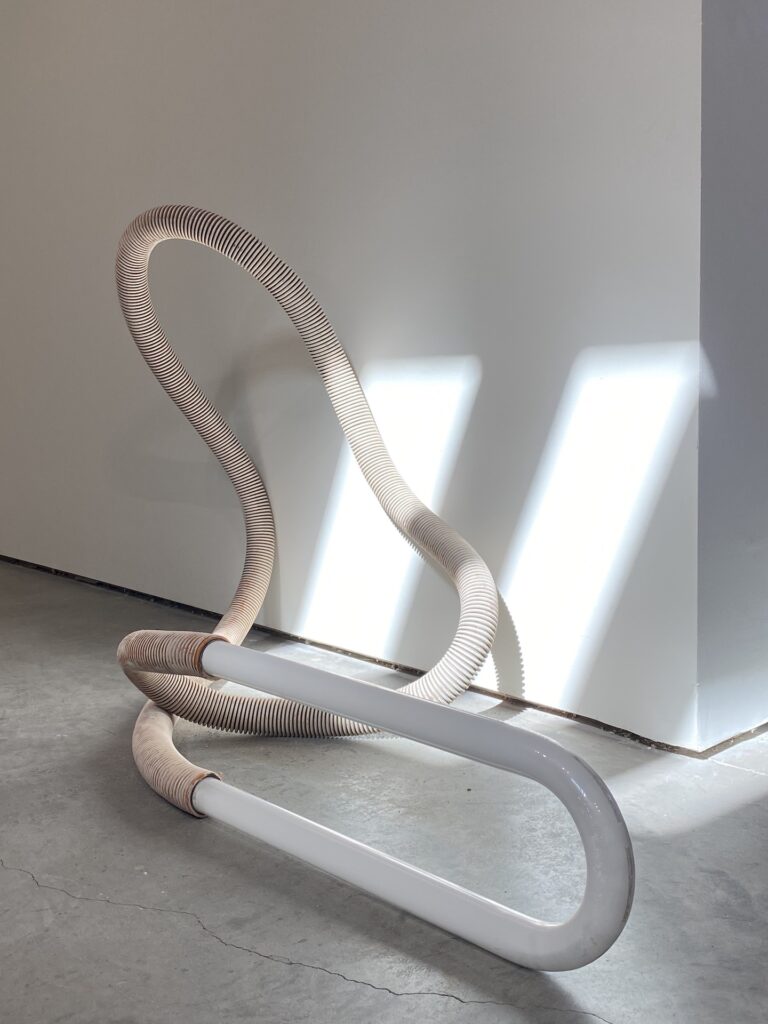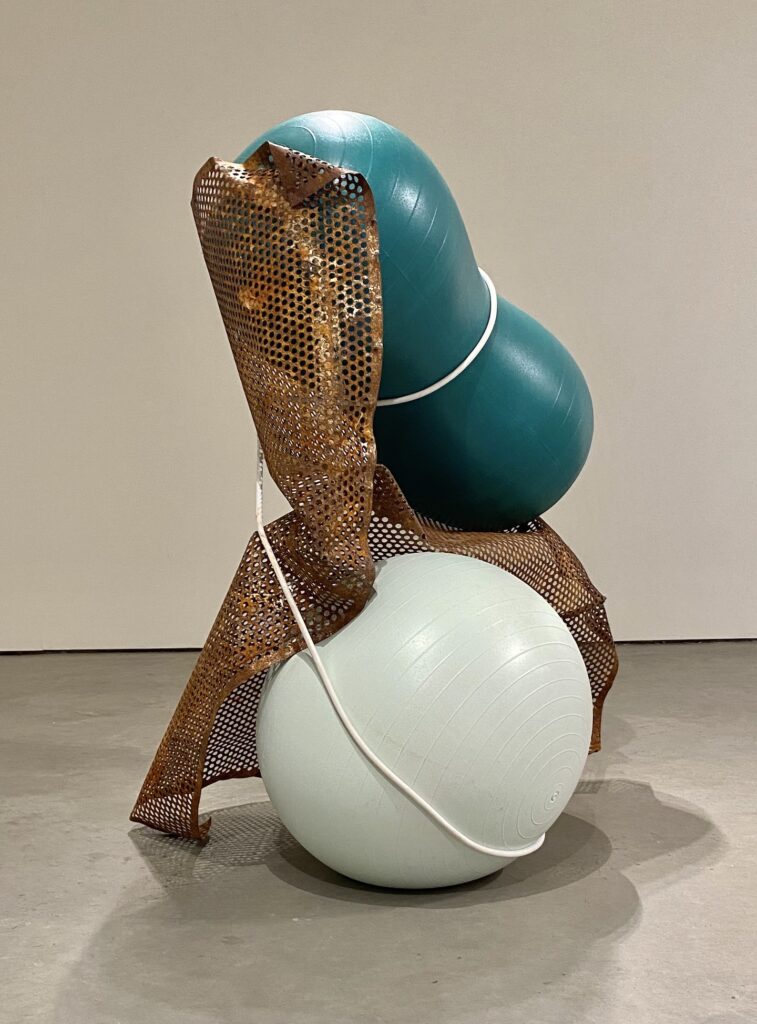In the Louisville gallery scene, Quappi Projects is unparalleled for offering complex and challenging exhibitions. As curator and owner, John Brooks has pushed to promote both local and national contemporary artists in the small but nimble white cube space tucked away on Market Street. Its latest exhibition, and first solo sculpture show, is titled “It is What is Not Yet Known,†featuring works by Kiah Celeste.
Celeste, a New York-born, Louisville-based artist has been making sculptural works with discarded items, construction materials, and found objects since early 2019. Celeste assembles Louisville’s discarded artifacts like latex tubing, glass, pigment, and steel pipe into a delicate balance of humor, wit, aesthetics, and beauty. Blue and pink hues, deliberate signature colors, create a patchwork as you visually scan the sculptures in the exhibition.
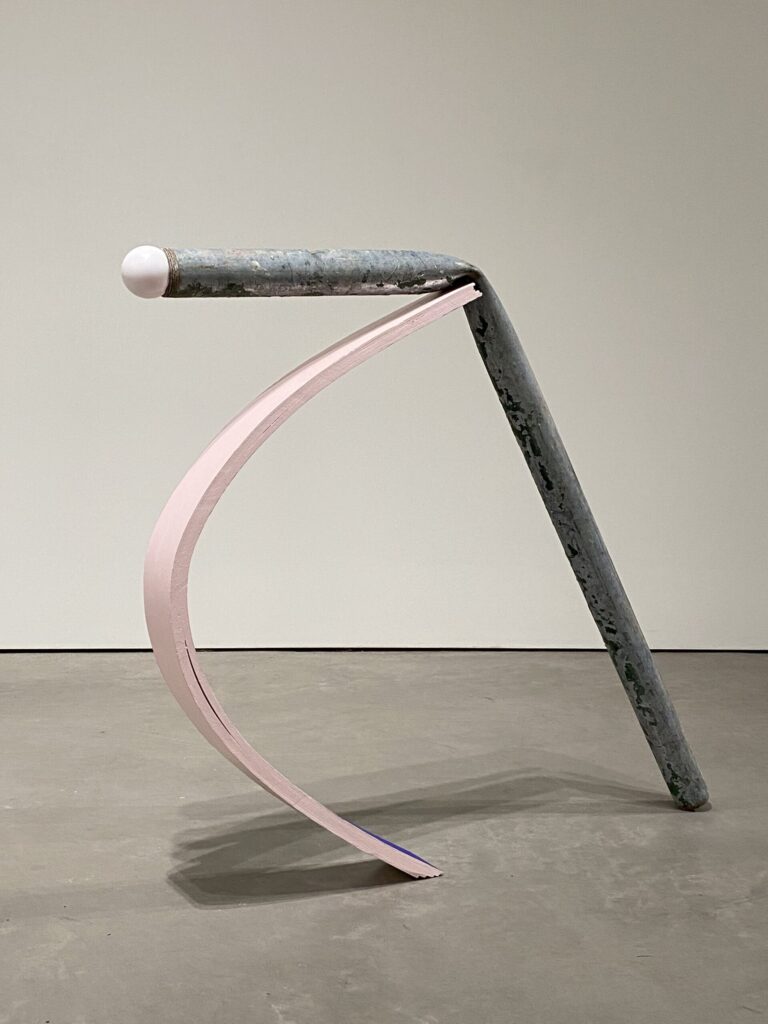
As you enter Quappi Projects, you encounter “Set,†a piece of precarious balance. It is made from wood found curved in a half-moon that the artist painted a muted pink, and a steel pipe bent at a near 90-degree angle. The wood piece leans into the steel almost as if it created the shape by impact. This work sets the tone of the exhibit, giving you a first taste, piquing your curiosity about how these seemingly contradictory forms and materials could have found each other.
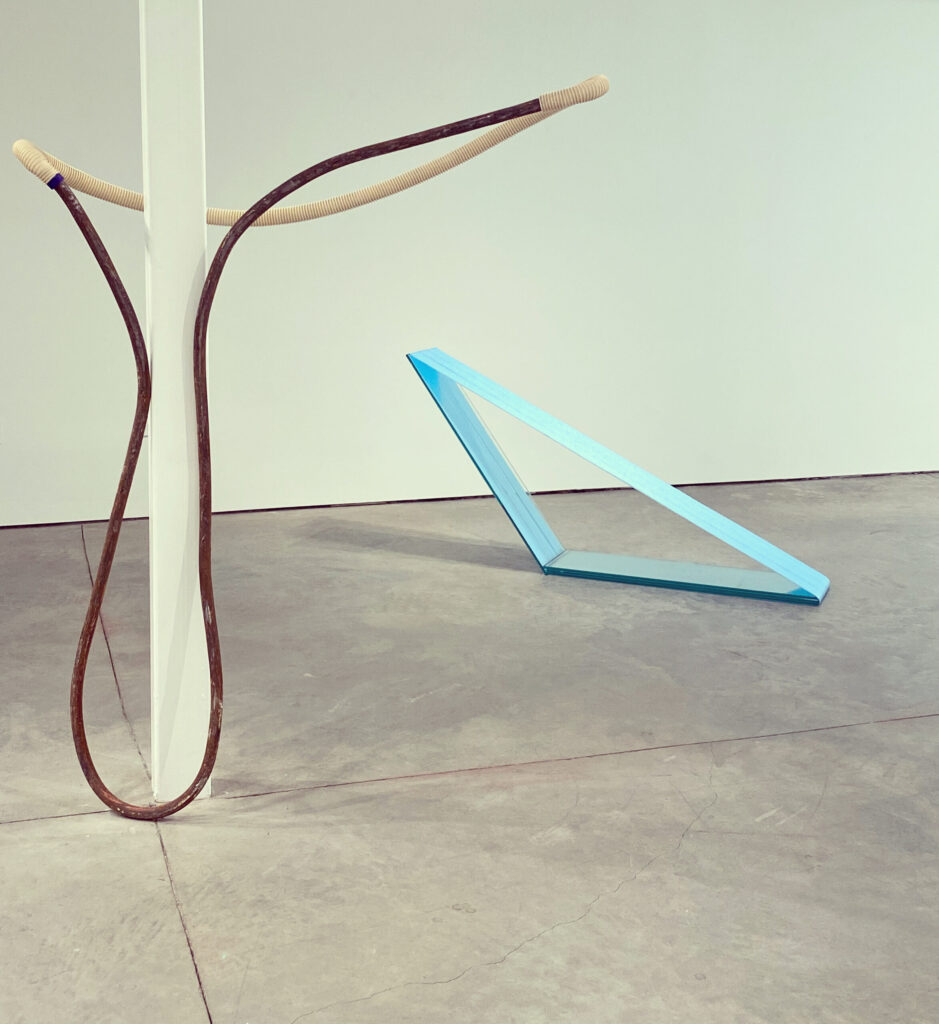
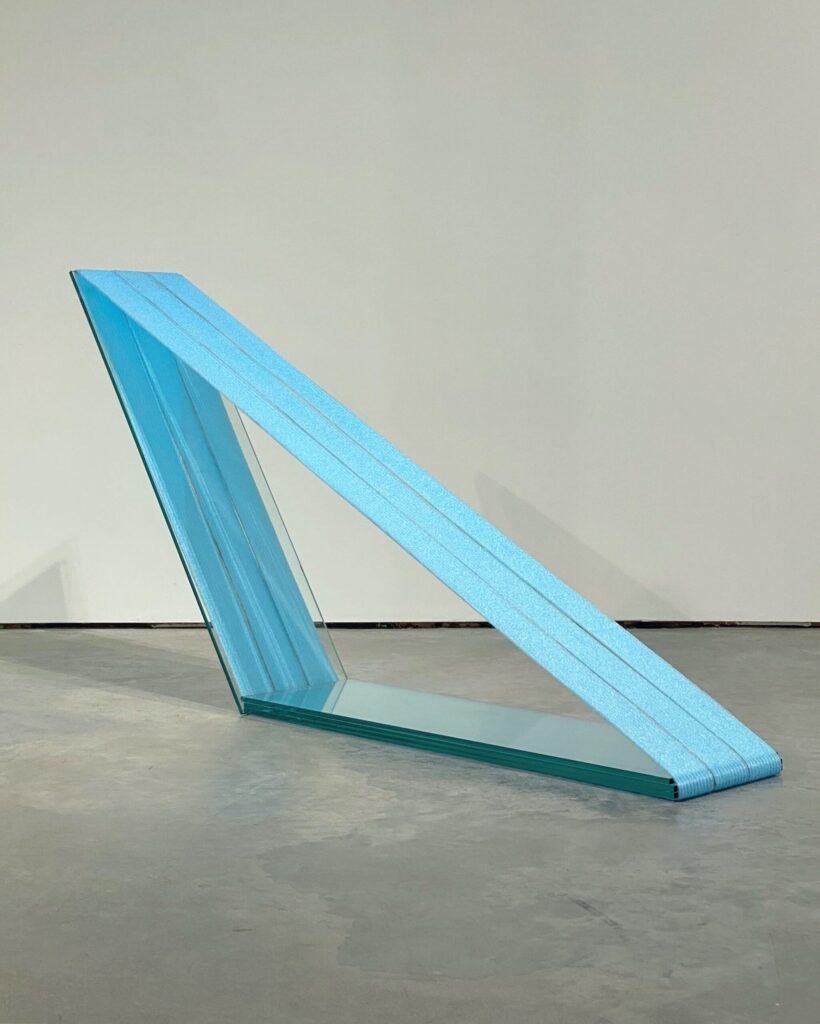
The intimacy of Quappi Projects almost feels overwhelmed by the sculptures, not because of their size, but from the minimal gallery space to work in. Despite this, the show remains light, atmospheric, and cerebral. Celeste’s ability to play with physical space, not just objects, shows through specifically in works like “Baker†and “Serpent in the Sand.†This may reflect her study of photography and her understanding of the relationship between human form and space.
“When the Window Cracked,†a sculpture made from what looks like discarded glass shelves stacked with blue microfoam in a clean-cut triangular form, gives a nod to the lineage of the field of contemporary sculpture itself. Celeste’s work finds guideposts in Richard Serra’s ability to change the physical weight of steel into something experiential and light; the often overlooked and underappreciated canon of feminist critique crafted by Eva Hesse’s short-lived life and career; and the simplicity of form and careful selection of site in the environmental earthworks of Nancy Holt.
Not one of the works in the exhibition seems dense in gesture and form, nor monumental in size in the traditional field of sculpture. It makes one wonder how Celeste’s sculptures might evolve on a larger scale and scope, even beyond her previous works “Rounded Corners, Pointed Curves†and “Of Few Words†at the Josephine Sculpture Park in Frankfort, Kentucky.
Celeste’s search for the right materials and their transmigration speak to an approach similar to the frameworks of great Southern practitioners like Thornton Dial and Lonnie Holley. And you can feel the intention and purpose – these are actively pursued material transformations. Each piece of discarded material offers its own narrative and lived experience. Celeste takes the time to balance materials which seem distant in nature yet are familiar in form.
Her materials are informed by the city in which she works, reflected in the type of discarded articles that others deemed unusable. Celeste’s pieces in this exhibition are part of a larger body of work entitled “I Find This Stable.†This specific series is concerned with the physical embodiment of sustainable practices and our collective environmental crisis. But the artist’s ability to see potential within the outcast gives us a glimpse into the transformative power of sculpture. Repurposing these materials provides a framework to reimagine the temporality of material in a capitalist system.
In “Bound to Bend,†perforated sheet metal is torqued, collapsed, and compressed onto exercise balls wrapped in latex tubing. Exercise balls were also a material of choice in a Quappi Projects group show “A Sort of River of Passing Events†last summer. Celeste explores the relationship manifested by the weight, shape, tension, and color of these rubber orbs and their physical tension against things like glass and concrete. Celeste has no fear of discovery and refinement.
Sadly, Celeste’s contemporary and globally influenced art-world vernacular has the potential to be lost on the Louisville public. There are few spaces to experience an entire exhibition of sculpture. Sculptural works remain foreign and little space is given to the discipline within the Louisville gallery scene which most often favors ceramic, glass, and painting. Happily, John Brooks’ curatorial vision continues to create robust, more refined, and complex shows like “It is What is Not Yet Known.â€
The exhibition is energetic, exciting, and accessible in a variety of formats and gestures. Quappi Projects and Kiah Celeste’s bold and ambitious work make great strides in bringing Louisville into unfamiliar territory.
“It is What is Not Yet Known†is on view till March 6th.
References and Reading

